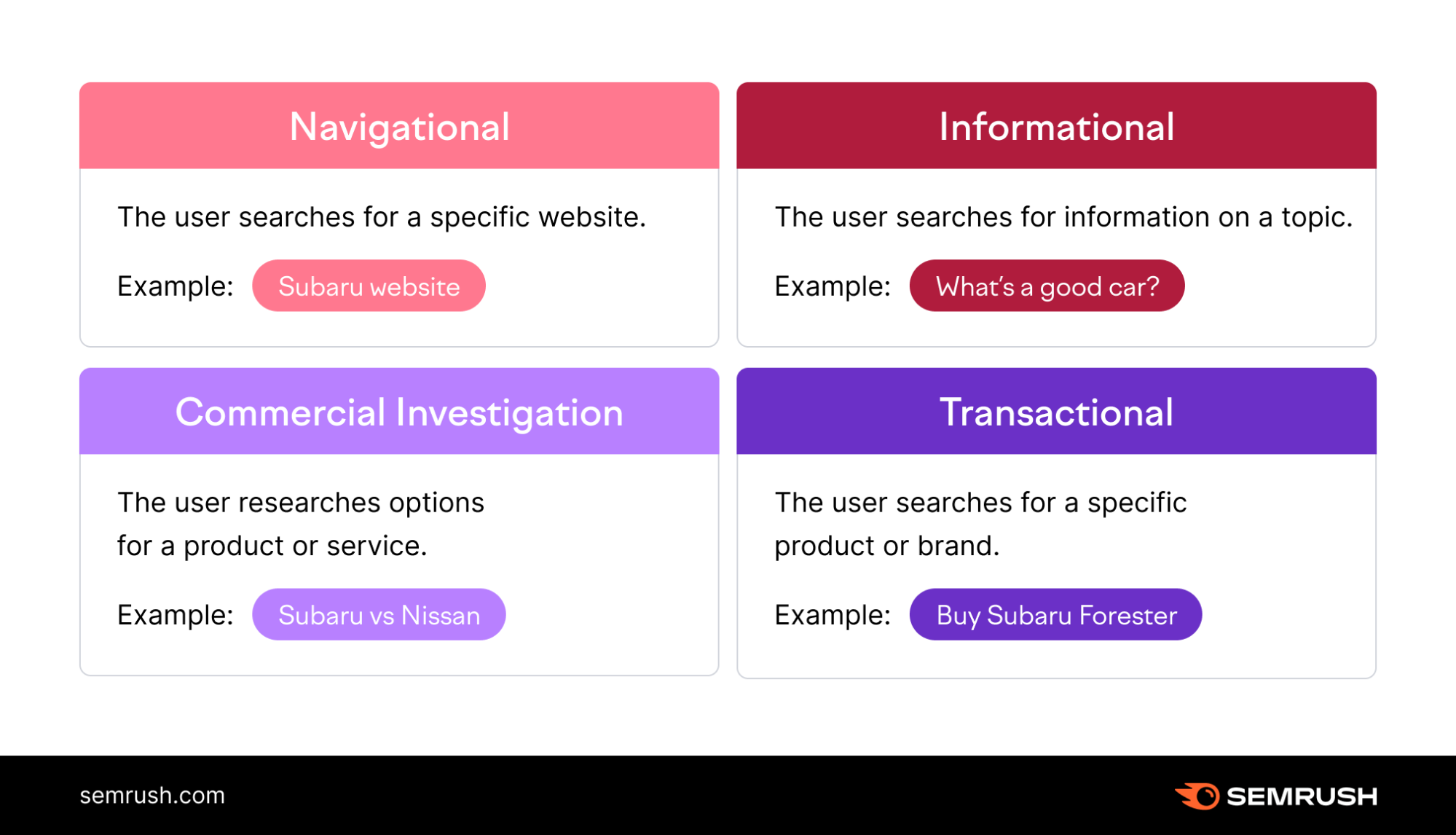2Mami Insights
Your go-to source for news, tips, and inspiration.
Search Intent: What Your Queries Really Mean
Unlock the secrets of search intent and discover what your queries really mean. Transform your online strategy today!
Understanding Search Intent: How User Queries Shape Content Strategy
Understanding search intent is crucial for creating effective SEO-focused content. In essence, search intent refers to the purpose behind a user's query—why they are searching for a particular term or phrase. There are generally four types of search intent: informational, navigational, transactional, and commercial investigation. Each type informs how content should be structured and what information should be prioritized. For example, an informational query might seek to answer a specific question, requiring in-depth articles or FAQs, while a transactional query may necessitate product listings and persuasive content to drive purchases.
Recognizing and adapting to user queries helps shape a more effective content strategy. By aligning your content with user intent, you can improve engagement metrics such as click-through rates and time on page, which are essential for SEO. Moreover, understanding the nuances of search intent allows for better keyword targeting, ensuring that the right content reaches the right audience. In doing so, businesses can position themselves favorably in search results, ultimately leading to increased traffic and conversions.

Decoding Search Intent: What Do Your Queries Reveal About User Needs?
Understanding search intent is crucial for creating content that aligns with user expectations. When users enter a query into a search engine, they are expressing a need or desire, whether it's to find information, make a purchase, or explore a topic further. By analyzing these queries, we can categorize search intent into several types: informational, navigational, commercial, and transactional. Each category reveals different aspects of user needs, allowing content creators to tailor their strategies accordingly.
For instance, informational queries often indicate that users are looking for answers or insights, while transactional queries suggest a readiness to make a purchase. By decoding these intentions, bloggers and marketers can better serve their audience, enhance SEO performance, and increase engagement. Therefore, it's essential to analyze not only the keywords but also the context behind each query, ensuring that your content meets the varying user needs at every stage of the discovery process.
The Importance of Search Intent: Why Knowing User Intent Elevates Your SEO Game
Understanding search intent is crucial for enhancing your SEO strategy. When users input queries into search engines, they are seeking specific information, solutions, or products. By aligning your content with the intent behind these searches, you not only improve your chances of ranking higher but also provide real value to your audience. There are generally four types of search intent: informational, navigational, transactional, and commercial investigation. Identifying which category your target keywords fall into allows you to craft content that meets users' needs effectively.
By prioritizing search intent, you can significantly enhance user experience and engagement on your website. When your content addresses the specific questions or concerns of the audience, it leads to lower bounce rates and higher user retention. Additionally, search engines are becoming increasingly sophisticated in understanding user behavior and preferences. Therefore, optimizing your content for search intent not only enhances your SEO game but also positions your brand as a trusted resource in your niche. Ultimately, this approach translates into better conversion rates and long-term success for your online presence.